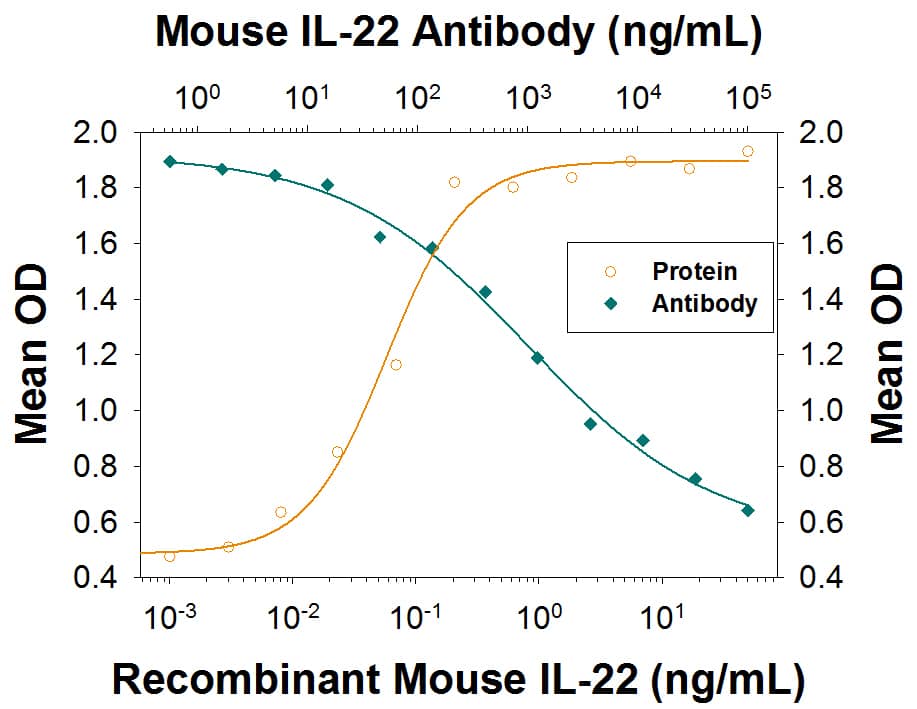Human BOC Antibody Summary
Asp31-Asp852
Accession # Q9BWV1
Customers also Viewed
Applications
Please Note: Optimal dilutions should be determined by each laboratory for each application. General Protocols are available in the Technical Information section on our website.
Preparation and Storage
- 12 months from date of receipt, -20 to -70 °C as supplied.
- 1 month, 2 to 8 °C under sterile conditions after reconstitution.
- 6 months, -20 to -70 °C under sterile conditions after reconstitution.
Background: BOC
BOC (Brother of CDO [CAM-related/down‑regulated by oncogenes]) is a member of the Immunoglobulin (Ig) superfamily, Ig/Fibronectin (FN) type III repeat family of cell surface proteins (1). Human BOC is a type I transmembrane (TM) protein. It is synthesized as a 1114 amino acid (aa) precursor that contains a 30 aa signal sequence, an 825 aa extracellular domain (ECD), a 21 aa TM segment and a 238 aa cytoplasmic region (1, 2). The ECD contains four Ig-like domains, followed by three FN type III repeats. The third (or juxtramembrane) FN type III repeat (aa 712‑809) binds SHH (3). The intracellular region is not essential for BOC-containing receptor complex signaling (1). However, it appears both the ECD and intracellular regions of BOC are used to form functional subunit interactions in cis-oriented receptor complexes (1, 4). One 157 aa BOC alternate splice form is reported that shows a 32 aa substitution for aa 126‑1114. The ECD of human BOC is 92% aa identical to mouse BOC ECD. BOC is found in the embryo associated with muscle precursors, limb mesenchyme, early chondrocytes and neurons (2, 5, 6). It appears to promote muscle differentiation and axon guidance (2, 6). BOC contributes to two multi-subunit receptor complexes. On myocytes, a BOC-associated complex includes CDO, neogenin, netrin, and at least two cadherin homodimers formed by either M- or N-cadherin (2). A second complex on neurons, somewhat ill‑defined, potentially includes BOC, CDO and Gas1. Here, BOC and/or CDO interact with SHH, with subsequent “transfer” or presentation of SHH to PTCH1 (6, 7).
- Kang, J.-S. et al. (2002) EMBO J. 21:114.
- Krauss, R.S. et al. (2005) J. Cell Sci. 118:2355.
- Yao, S. et al. (2006) Cell 125:343.
- Kang, J.-S. et al. (2003) Proc. Natl. Acad. Sci. USA 100:3989.
- Mulieri, P.J. et al. (2002) Dev. Dyn. 223:379.
- Okada, A. et al. (2006) Nature 444:369.
- Allen, B.L. et al. (2007) Genes Dev. 21:1244.
Product Datasheets
FAQs
No product specific FAQs exist for this product, however you may
View all Antibody FAQsIsotype Controls
Reconstitution Buffers
Secondary Antibodies
Reviews for Human BOC Antibody
There are currently no reviews for this product. Be the first to review Human BOC Antibody and earn rewards!
Have you used Human BOC Antibody?
Submit a review and receive an Amazon gift card.
$25/€18/£15/$25CAN/¥75 Yuan/¥2500 Yen for a review with an image
$10/€7/£6/$10 CAD/¥70 Yuan/¥1110 Yen for a review without an image










